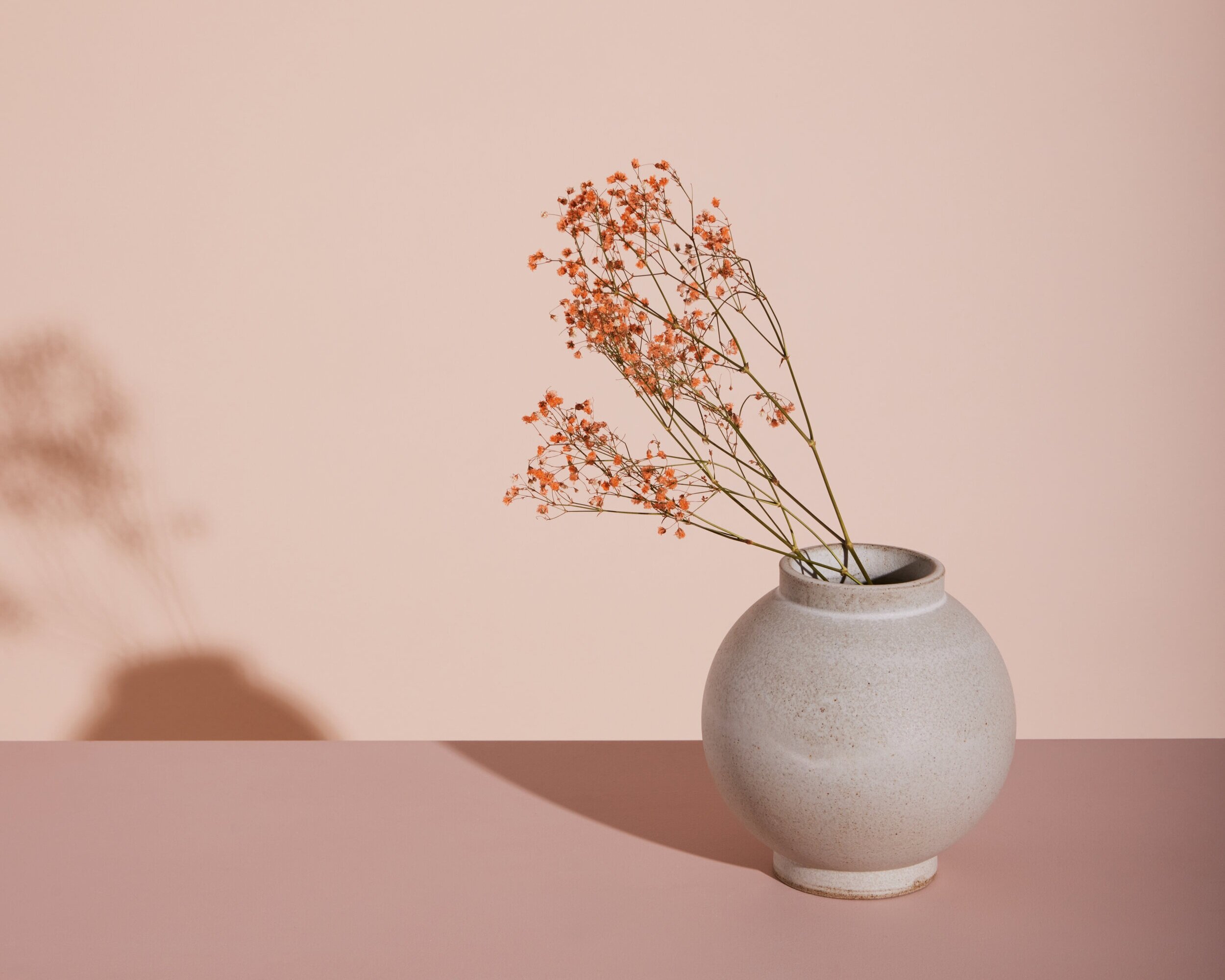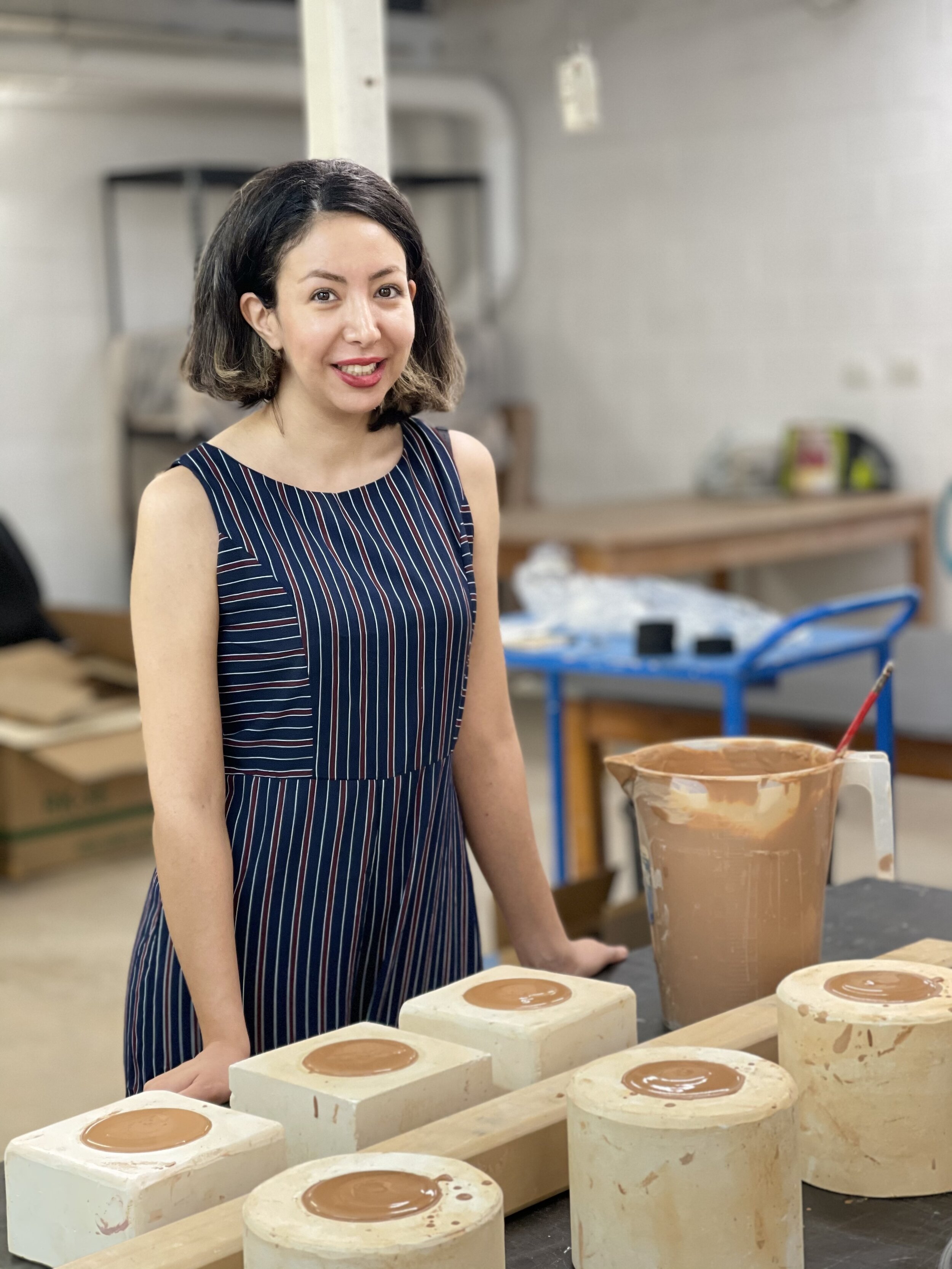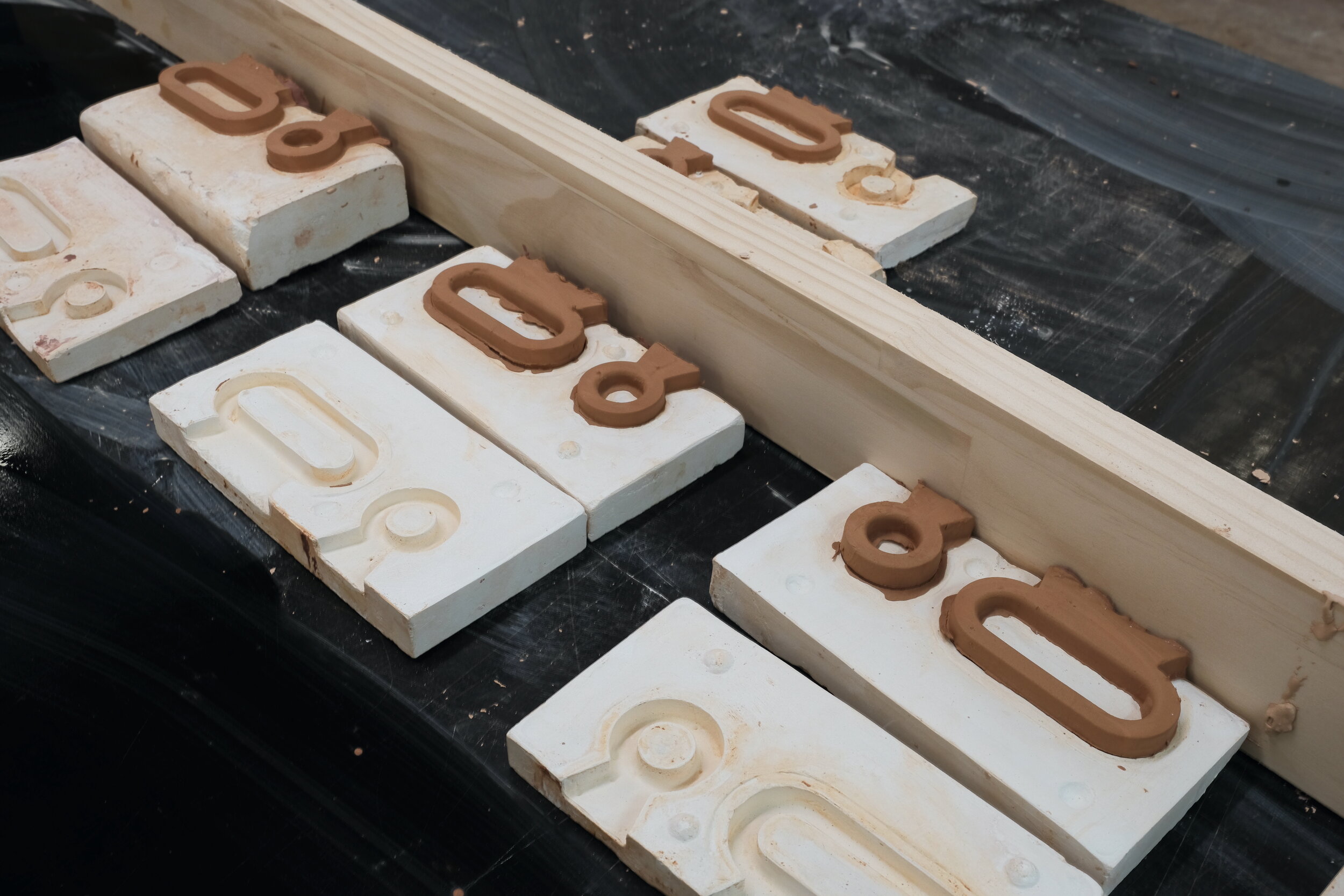Profile... the art of slip casting with Golshad Asami
The jam Luna Vase designed by Ashlee Hopkins and slip cast by Goli and the team in the JamFactory Ceramics Studio. Photo: Josh Geelen.
Discover the art of slip casting with JamFactory’s newest member of the Ceramics Studio, Golshad Asami (Goli). Studying Ceramic Science Engineering in Iran, Goli has been working on jam - JamFactory. Australian. Made’s - latest collection of vases and mugs.
Can you explain the process of slip casting and how you create an object using slip?
Slip casting is a method used to make shapes by mixing a fine ceramic powder in water along with chemicals that help the powder disperse throughout the liquid; creating what is called a slip. A slip is fluid, but contains solid particles.
In slip casting, the slip is poured into a mould that removes some of the liquid from the slip near the mould wall, drying the clay. This occurs because the mould is porous and the liquid wicks into the pores by capillary action.
The moulds used for slip casting are usually made of plaster. They are formed by mixing gypsum and water and allowing it to harden around a replica of the shape you hope to produce. This results in a cavity shaped like your final product that you can then pour the slip into.
When the liquid is removed from the slip in the mould, the solid powder material is left in the shape of the mould. Once the powder is completely dried and removed from the mould, what is left is called the greenware.
Goli in the JamFactory Ceramics Studio. Photo: Ashlee Hopkins.
Handles for the jam collection’s Good Morning Mugs and Cups. Photo: Ashlee Kopkins.
What do you enjoy most about using this technique?
Slip casting allows us to produce complex shapes that wouldn’t be possible using other conventional pottery methods. It’s ideal for
small-scale production runs or to produce limited edition pieces. Slip casting allows us to produce a lot of homogeneous clay pieces without compromising on their shape.
You studied Ceramic Science in Iran, can you explain a bit of the science behind slip casting?
Ceramic Science Engineering is the science and technology of creating objects from inorganic, non-metallic materials. This is done either by the action of heat or at low temperatures using precipitation reactions from high-purity chemical solutions.
In the processing of ceramics, making slip is the most common approach because it brings two important benefits. At first, water penetrates into clay particles and layers to make a colloidal suspension with fine particles and desired particle dispersion. Generally, having finer particles with good dispersion results in creating the better packing during slip casting process, which leads to lower porosity and higher strength in the final ceramic product.
Secondly, ceramic slip allows us to create uniform and homogeneous moisture gradient in the green body (the ceramic shape produced after slip casting). If moisture gradient is not uniform in different parts of the body, cracks will be created during the drying process.
So, ceramic slip significantly improves the strength and the mechanical properties of the final product.
The Good Morning Cup, designed by Daniel Emma and slip cast by Goli and the JamFactory ceramics team. Photo: Josh Geelen.
Slip casting in progress - the slip is left to dry in the plaster moulds. Photo: Ashlee Hopkins.
You recently joined the JamFactory Ceramics team as the Slip Casting Technician, what does a typical day in the studio look like for you?
My typical day at JamFactory starts with checking the rheology of slip (density and viscosity). If there are any problems with it I will investigate the cause and try to solve the problem and prevent them from recurring. I then check the moulds for water absorption and if necessary I’ll make the moulds from plaster. I then prepare the moulds for slip casting for making mugs, cups, handle and vases.
Check out the JamFactory Ceramics Studio Instagram for more!





